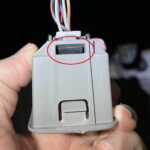The automotive world widely adopts the OBD2 (On-Board Diagnostics II) standard, a system mandated in the USA for cars in 1996 to standardize vehicle diagnostics. This standardization, however, didn’t extend to motorcycles. As a result, the landscape of motorcycle diagnostic systems is more diverse, though not without common threads, particularly the CAN BUS (Controller Area Network) technology.
While you might not find a universal OBD2 port on your motorcycle, the underlying principles of modern vehicle diagnostics often apply. Many contemporary motorcycles, especially those from leading manufacturers, incorporate CAN BUS systems, a sophisticated communication protocol that allows various parts of the motorcycle’s electronics to communicate with each other.
Manufacturers like Harley Davidson, with models from 2013 onwards, and BMW Motorcycles, predominantly from model year 2008 and later, have embraced CAN BUS technology. This means that while they may not have the standard OBD2 connector found in cars, the diagnostic data is transmitted using the CAN BUS protocol.
[ ]
To access this diagnostic information, you’ll typically need an adapter. These adapters bridge the gap between the motorcycle’s proprietary connector and a standard OBD2 scanner. For brands like Ducati, BMW, and Triumph, specific CAN BUS adapters are available, enabling mechanics and enthusiasts to use standard OBD2 scan tools to retrieve valuable data. This data can range from engine performance metrics to fault codes, aiding in troubleshooting and maintenance.
However, it’s crucial to acknowledge that not all motorcycle manufacturers adhere to CAN BUS or easily accessible diagnostic standards. Suzuki, for instance, utilizes its proprietary Suzuki Diagnostic System (SDS). This system operates on its own unique protocol, much like early networking systems before global standards became prevalent. This means that for Suzuki motorcycles with SDS, a standard OBD2 scanner alone won’t suffice; specialized SDS tools or adapters are required.
Looking ahead, the trend leans towards greater standardization in motorcycle diagnostics. Industry leaders are pushing for more unified systems, potentially driven by cost efficiency and the benefits of streamlined diagnostics. As CAN BUS technology becomes more cost-effective to implement across a wider range of models, the industry may move closer to a more standardized approach, making tools like OBD2 scanners increasingly versatile for motorcycle maintenance.
Despite the current variations and proprietary systems, the core technology behind automotive and motorcycle diagnostics is converging. For many motorcycle owners and technicians, understanding CAN BUS and the availability of OBD2 adapters is key to accessing the diagnostic data necessary for effective motorcycle upkeep and repair. While a universal OBD2 standard for motorcycles isn’t yet a reality, the path towards more accessible and standardized diagnostics is becoming clearer.
